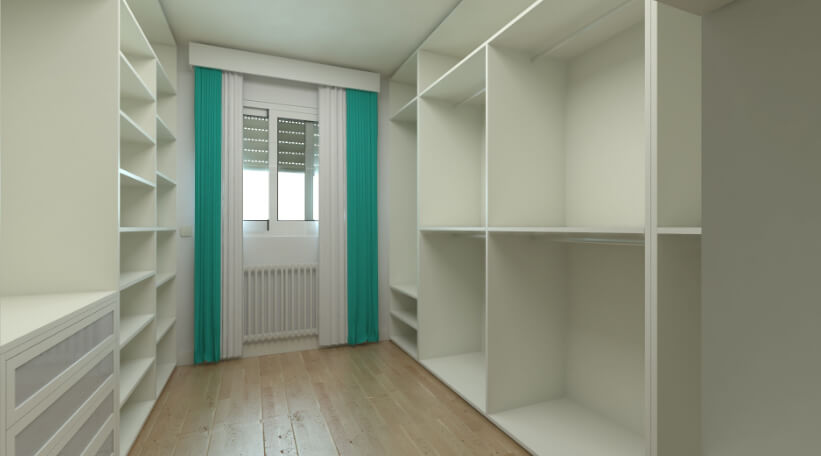If you have unused paint in your basement, now is the time
to get out your paintbrush and get creative.
By Diane Franklin
Typically when you paint a room in your home, you are going to have something left over in the can. Maybe you have a collection of those cans in your basement, having saved them with the thought that “someday” you’ll have a use for that extra paint. If “someday” has arrived, here are some ideas for what you can do with that leftover paint.
- Laundry Rooms and Walk-in Closets
For most people, walk-in closets and laundry rooms are last on their “to-paint” list. But these days, such overlooked spaces are getting more attention. For instance, walk into any home décor store, and you’ll see a wide selection of whimsical “laundry room” signs. Those signs are going to really “pop” if the walls behind them are freshly painted. Walk-in closets also are a bigger deal these days. Many of them are big enough to accommodate dressers, shelves—even make-up vanities and armchairs. Pastel colors and light neutrals will work well in these spaces, as they will make these relatively small spaces seem more spacious.
- Garages
Painting a garage is a great way to use up several cans of leftover paint, since the space is typically large. Because of the square footage you’ll be covering, you will likely have to mix several different cans of paint together to create one blended color. To do the job right, you’ll need a 5-gallon bucket with lid, a long stir stick and a paint strainer. If you want to make the mixing job easier, you can also invest in a paint mixer.
When mixing leftover paints together, make sure they are all the same type—i.e., a water-base with a water-base or an oil with an oil. Since most paints are water-based these days, that shouldn’t be too difficult to do. It’s okay if the sheens are different—a flat with a semi-gloss, for instance—but keep in mind that you will get a sheen that is somewhere between the two.
When using two or more leftover paints, make sure you mix them really well. Strain the mixed paint, if needed, and then mix the paint again. Also, it’s best if you can mix in some light colors with some darker colors. If all the colors you use are dark, you might wind up with a muddy-looking mess that won’t even be suitable for garage walls. To ensure you’re going to like the color, brush it out on a board first and let it dry before assessing whether to proceed with the job.
Also, remember—it’s easier to darken a light color than to lighten a dark color, so start with a lighter hue and darken it gradually until you get the shade that you like.
- Add Color to the Ceiling
The standard look for home interiors is a white ceiling with colored walls, but who says it has to be that way? When painting a room, you can use same color on the ceiling as you used for your walls. This works nicely in such spaces as bedrooms and bathrooms to evoke a relaxing, soothing mood. It also works well in rooms with asymmetrical or angled ceilings where you don’t want to draw too much attention to the architectural peculiarities. The added benefit is that you will use up the paint that would otherwise be left in the can.
Painting your ceiling a lighter color will make the walls seem higher and the space look larger. Conversely, using a darker color will make the ceiling seem lower and the room more intimate. Try to keep the contrast to a minimum or the look may be a bit disorienting.
- Add Color to Accessories
Leftover paint can be used to create a sense of cohesiveness in the room where the majority of the paint was already used. Paint a picture frame, an accent table or a lamp in the same color. Perhaps add a little white to lighten the hue a bit so that the color is not too “matchy-matchy.”
Another idea is to use the color in small doses—such as in the interior of a bookshelf or the drawers of a dresser. If you have an artistic flair, use the paint as a featured color in a customized wall hanging.
- Donate or Recycle
When you’ve done everything you can with your paint but there is still some left over, consider donating it to a worthy cause. There are always local theater groups, youth groups, schools and churches that can use the paint.
Another alternative is to recycle the paint. Many states participate in the PaintCare recycle program; check the program website for instructions on how to donate. (As of this writing, some of the normal operations were being disrupted by the COVID-19 health crisis.) Other states have regular household hazardous waste programs that will accept your leftover paint. Always call before dropping off your paint to ensure that they will accept the types and amount of paint you would like to recycle.

 Interior Paints
Interior Paints Exterior Paints
Exterior Paints Primers
Primers Stains & Clears
Stains & Clears
 Paint Brushes
Paint Brushes Paint Roller
Paint Roller Paint Trays & Liners
Paint Trays & Liners



